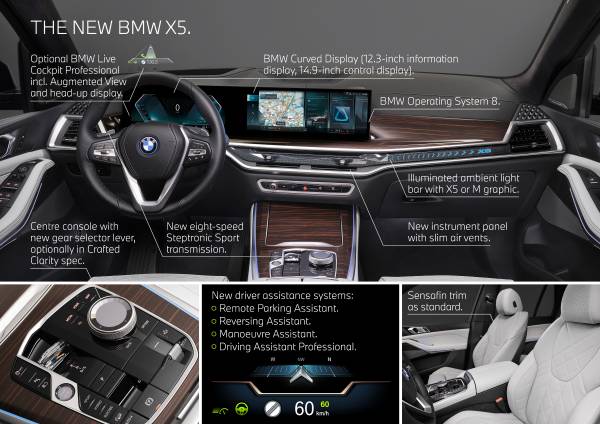When it comes to luxury SUVs, the BMW X5 has been a popular choice for car enthusiasts all over the world. Known for its elegant design, advanced technology, and impressive performance, the BMW X5 is truly a remarkable vehicle. One important aspect of the BMW X5 that contributes to its exceptional performance is its powerful engine. Let’s take a closer look at the engine diagram of the BMW X5 to understand its components and how they work together.

Credit: www.instagram.com
Engine Overview
The engine in the BMW X5 is a vital part of its overall performance. It is designed to provide power, efficiency, and a smooth driving experience. The BMW X5 is equipped with different engine options depending on the specific model and year. However, most models feature either a six-cylinder or eight-cylinder engine.
1. Six-cylinder Engine
The six-cylinder engine found in the BMW X5 is commonly known as an inline-six engine. It is a straight-six configuration where all the cylinders are arranged in a single line. This engine design offers several advantages such as smooth operation, better balance, and improved efficiency. The diagram below illustrates the components of a typical six-cylinder engine found in the BMW X5:

The key components of a six-cylinder engine in the BMW X5 are:
- Cylinders: The engine has six cylinders, each housing a piston that moves up and down in a reciprocating motion to generate power.
- Pistons: Pistons are responsible for compressing the air-fuel mixture in the cylinders and transferring the generated force to the crankshaft.
- Crankshaft: The crankshaft is connected to the pistons and converts the linear motion of the pistons into rotational motion, which powers the vehicle.
- Camshaft: The camshaft controls the opening and closing of the engine’s valves, allowing for the intake of air and fuel and the release of exhaust gases.
- Valves: The intake valves introduce the air-fuel mixture into the cylinders, while the exhaust valves allow the combustion gases to exit.
- Turbocharger: Some BMW X5 models come with a turbocharger, which increases the engine’s power output by forcing more air into the cylinders.
2. Eight-cylinder Engine
The eight-cylinder engine found in some BMW X5 models provides even more power and performance. The V8 engine is called so because the cylinders are arranged in a “V” shape. This configuration allows for a more compact design and better weight distribution compared to an inline arrangement. The diagram below showcases the components of an eight-cylinder engine:

In addition to the components mentioned in the six-cylinder engine, the eight-cylinder engine has two additional cylinders, resulting in increased power and torque. Some BMW X5 models also utilize advanced technologies such as direct fuel injection and variable valve timing to further enhance performance and efficiency.

Credit: www.rallyebmw.com
Frequently Asked Questions For Bmw X5 Engine Diagram : Unlocking The Inner Workings
What Is The Function Of The Engine Diagram In A Bmw X5?
The engine diagram in a BMW X5 provides a visual representation of the various components and their functions within the engine, helping users understand how everything works together.
How Can I Interpret The Engine Diagram In My Bmw X5?
To interpret the engine diagram in your BMW X5, refer to the key or legend provided in the diagram, which will explain the symbols and labels used to identify different parts of the engine.
What Are The Major Components Shown In The Engine Diagram Of A Bmw X5?
The engine diagram of a BMW X5 typically shows major components such as the cylinder block, pistons, crankshaft, camshaft, valves, fuel injectors, and cooling system.
How Does The Engine Diagram Help With Troubleshooting Issues In My Bmw X5?
The engine diagram can be a valuable tool for troubleshooting issues in your BMW X5. By identifying specific components and their location, it can help you pinpoint potential problem areas and facilitate repairs.
Conclusion
The BMW X5’s engine is a marvel of engineering, combining power, efficiency, and advanced technologies to deliver an exceptional driving experience. Whether you opt for a six-cylinder or eight-cylinder engine, you can expect impressive performance and a smooth ride. Understanding the engine diagram of the BMW X5 provides valuable insight into the components that contribute to its remarkable performance on the road.
Disclaimer: The engine diagrams provided here are for illustration purposes only and may not represent the exact configuration of every BMW X5 engine. Refer to the official BMW documentation for accurate information.






